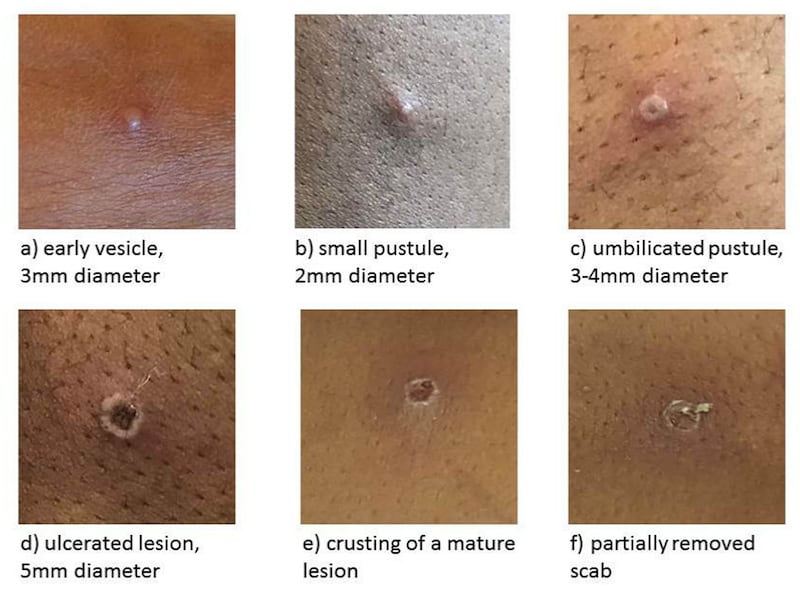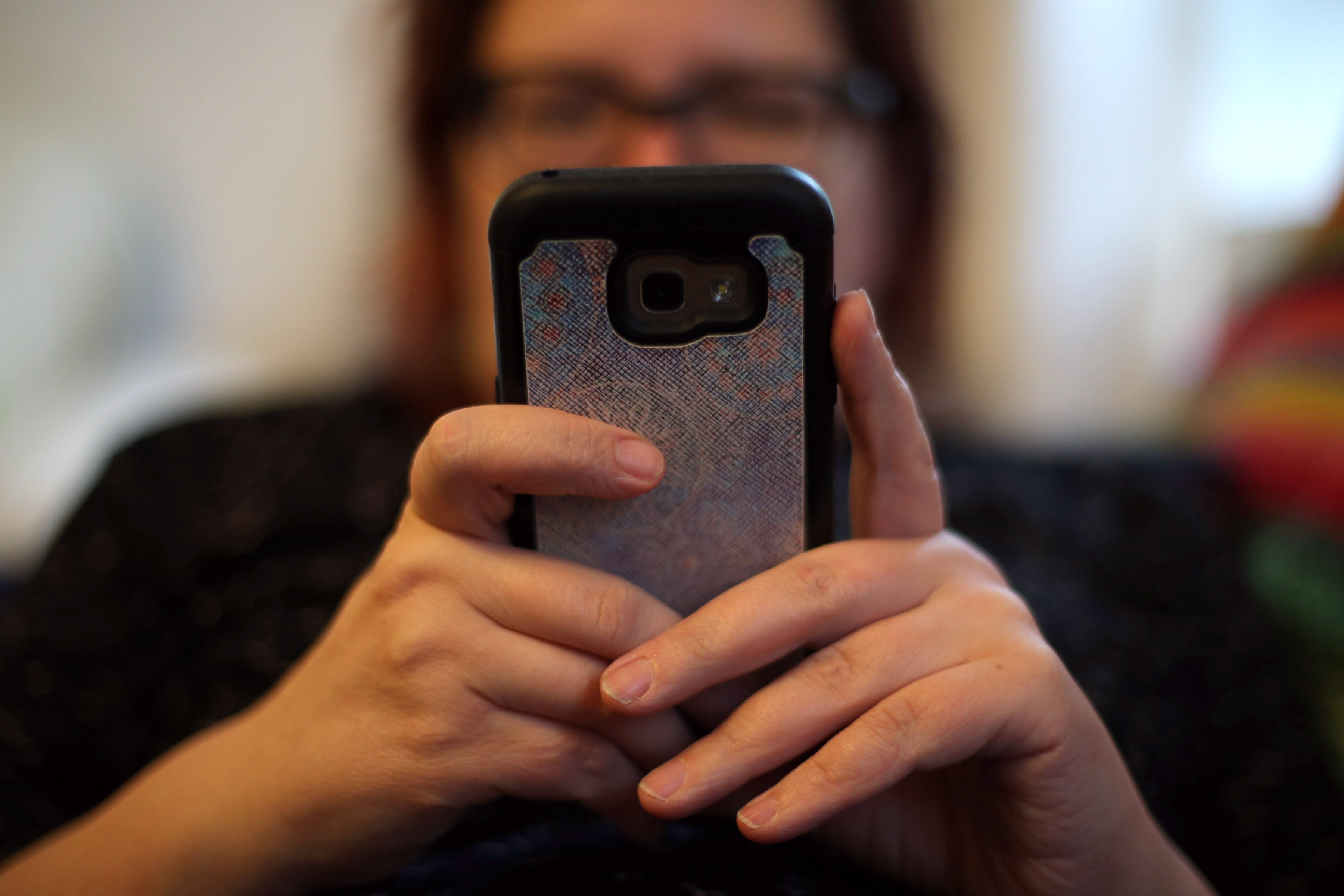The World Health Organisation (WHO) has declared that the monkeypox outbreak in more than 70 countries is a global emergency.
On Friday, the United States identified its first two monkeypox cases in children.
The Netherlands reported a case of monkeypox in a child under 10 on Thursday.
Here is everything you need to know:
READ MORE
What is monkeypox?
Monkeypox is related to smallpox and cases are usually found in west and central Africa, with the virus not often spreading elsewhere.
That is why outbreaks reported in multiple countries, including the UK and across Europe, caused alarm among public health experts.
The disease, which was discovered in monkeys, is usually mild but can cause severe illness in some cases.
What are the symptoms?
Most monkeypox patients experience only fever, body aches, chills and fatigue, but some may develop a rash and lesions on the face and hands that can spread to other parts of the body.
The rash can look like chickenpox or syphilis, and scabs can form which then fall off.
Most people recover within a few weeks.
The incubation period of monkeypox is usually from six to 13 days, but can range from five to 21 days.

How does monkeypox spread?
The most likely route of monkeypox transmission is close physical contact, touching clothing, bedding or towels used by someone with the monkeypox rash, or touching monkeypox skin blisters or scabs.
There is a smaller risk of it being spread through coughs and sneezes, and as prolonged face-to-face contact would be needed, this is not one of the main routes of transmission for the monkeypox virus.
Sexual intercourse is thought to expose people to a higher risk of contracting the disease as, although it is not known to be sexually transmitted, the close physical contact involved means exposure is more likely.
A majority of the cases seen so far have been in gay and bisexual men and men who have sex with men.
What is the level of risk in the Ireland?
The type of monkeypox involved in the outbreak is a west African variety said to be fatal in only one per cent of cases.
When did monkeypox arrive in the State?
The first case connected to the current outbreak was recorded in the State on May 28th and Northern Ireland confirmed cases on May 26th, 2022.
How many cases are there in the Republic
As of July 22nd, the Health Protection Surveillance Centre (Health Protection Surveillance Centre) has been notified of 69 confirmed cases of monkeypox.
The vast majority of these cases do not have a travel link to a country where monkeypox is endemic.
What is the current public health guidance for monkeypox?
If you have a rash that looks like a monkeypox rash, contact your local sexual health clinic or general practitioner. Keep away from other people and do not engage in sexual contact until you have been seen.
A person with monkeypox infection may pass on the infection to close contacts from the time they have symptoms until the rash is fully healed. A close contact is someone who has been in close proximity to the person with monkeypox (this can mean household or sexual contacts and healthcare workers caring for the patient) during the time the person may have been infectious.
Close contacts need to monitor themselves for symptoms of monkeypox for 21 days. They may be advised to reduce contact with vulnerable people (those with weak immune systems, pregnant women, and young children) and avoid close physical contact. Some contacts may need to avoid sexual contact during those 21 days.
There is no licensed monkeypox vaccine available in Europe. Ireland’s National Immunisation Advisory Committee (NIAC) has recommended that smallpox vaccine can be used for monkeypox. This recommendation has also been made in other countries.
What is the advice for gay, bisexual and men who have sex with men (gbMSM):
Anyone, regardless of their sexuality, can get monkeypox. However, many of the cases are in men who self-identify as gay, bisexual or other men who have sex with men (gbMSM). Monkeypox rashes can look like some sexually transmitted infections, including herpes and syphilis, which, the the centre says, may explain why many of the initial cases were picked up at sexual health clinics.
The the centre says a “community-engagement response” is under way to create awareness within the gbMSM community about monkeypox and its symptoms.
The HSE is advising those who self-identify as gbMSM to be alert to any unusual rashes or vesicular lesions on any part of their (or their partner’s) body, especially their genitalia. If they do notice any such changes, they should contact their local STI Clinic (Sexually Transmitted Infection) or their doctor for advice.
A list of public STI services is available on the HSE’s Sexual Wellbeing website.
How do I reduce my risk of monkeypox if I am travelling to a country with naturally occurring monkeypox?
- Try to avoid people who are sick, especially if they have a fever or rash.
- If you are staying with someone who is sick, make sure they are seen by a doctor.
- If you are caring for a sick person, make sure to wear rubber/latex gloves, a splash-proof gown and a face mask.
- After seeing or caring for a sick person, make sure to wash your hands thoroughly.
- If you eat bushmeat and other meats, make sure they are thoroughly cooked, and hot through.
- If you are handling any animals (especially sick animals), make sure you wear rubber/latex gloves and thoroughly wash your hands afterwards.
- Avoid contact with any bedding that has been in used for a sick animal
- If you get sick while you are away, be sure to contact a doctor to get medical advice.
Why has the WHO declared a global emergency?
There are now more than 16,000 reported cases from 75 countries and territories, and five deaths, WHO director general Tedros Adhanom Ghebreyesus said — up from 3,040 cases in 47 countries around a month ago.
He acknowledged that the committee was unable to reach a consensus on whether the outbreak represents a public health emergency of international concern.
But he said this is an outbreak “that has spread around the world rapidly, through new modes of transmission, about which we understand too little, and which meets the criteria in the International Health Regulations” and he had therefore decided that it should be declared a global emergency. — Additional reporting PA














